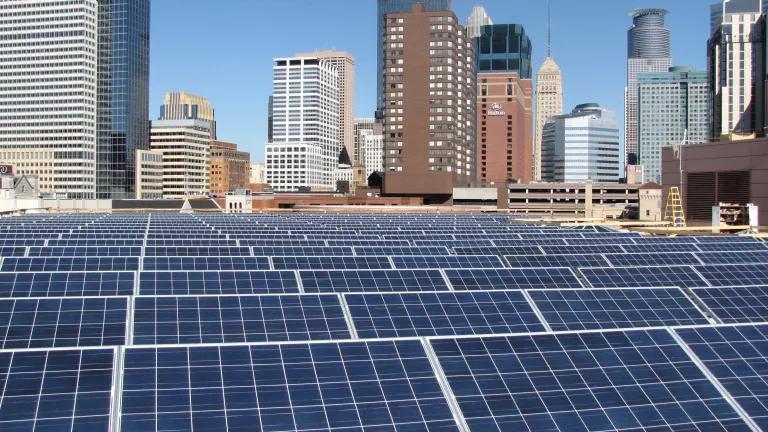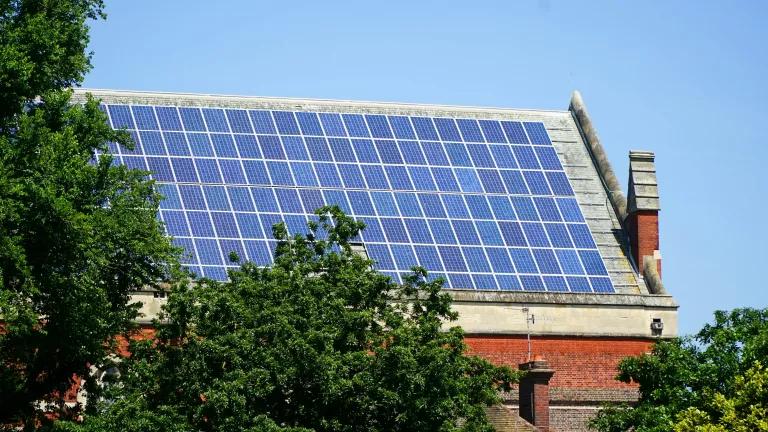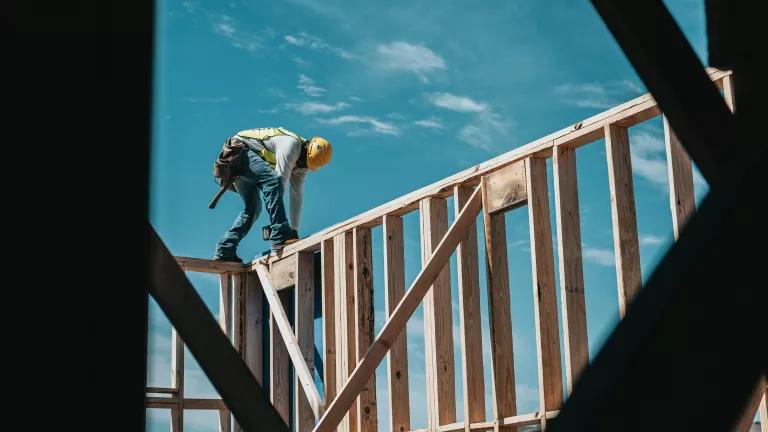A Rapid Test Finds New Energy Justice Opportunities at DOE
With funds from the new infrastructure law, communities have an opportunity to launch new public and community energy programs, seek investments in transmission and grid infrastructure to help meet local climate and resilience goals, and work toward energy justice.
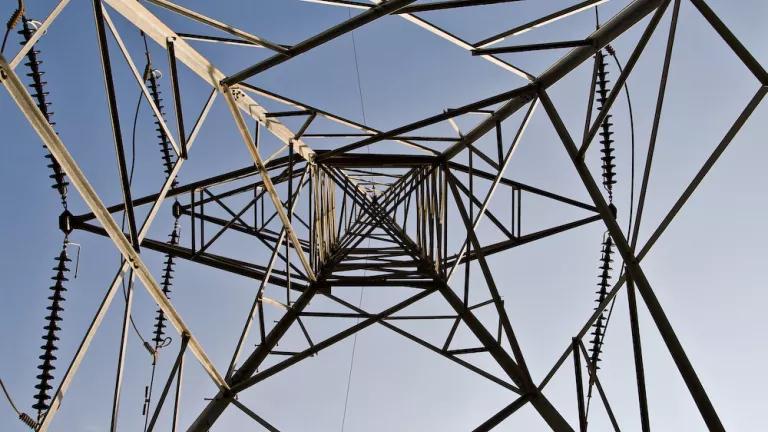
Ground up view of a high voltage electric transmission tower
With funds from the new infrastructure law, communities have an opportunity to launch new public and community energy programs, seek investments in transmission and grid infrastructure to help meet local climate and resilience goals, and work toward energy justice.
The Department of Energy (DOE) is authorized to invest $62 billion in the Bipartisan Infrastructure Law. Of the total funding, $6 billion is directly accessible for communities through either formula or competitive grants while the balance includes opportunities for subgrants administered by state energy offices or potential economic benefits and new jobs from infrastructure and grid investments.
Q: What’s different this time? A: Energy justice
The Biden administration’s executive order on racial equity directs agencies to make equity plans, while the Justice 40 Initiative commitment directs certain climate and clean energy federal investments to work toward a goal that, “40 percent of the overall benefits of such investments flow to disadvantaged communities.” In response, the Department of Energy has a new dashboard for energy justice to identify Justice 40 recipients.
How does the Justice 40 Initiative create opportunities for communities using the infrastructure law funds? The guidance for Justice 40 lists examples of benefits the Energy department should consider for Justice 40 communities: increase energy efficiency programs and resources; deploy clean energy, including renewable community energy projects; establish community microgrids; and reduce energy burden, which is the share of household income spent on home energy costs.
The Weatherization Assistance Program is a priority area designated for Justice 40 implementation with new infrastructure funding. Weatherization programs reduce energy costs for low-income households by increasing energy efficiency. The infrastructure law provides $3.5 billion in funding for weatherization over five years—a tenfold increase over the usual annual spending on the program. These funds will help reduce energy burdens and improve quality of life for low-income households struggling with high home energy costs. However, as is acknowledged in the Department of Energy Equity Action Plan, changes to the program are needed to ensure these funds reach the populations most in need. Notably, many low-income households are rejected from the program because of health and safety issues - such as asbestos or plumbing repairs - that present a barrier to weatherization upgrades. The equity plan sets out specific steps the agency will take to reduce the number of health and safety deferrals, including by leveraging a new weatherization readiness competitive grant program.
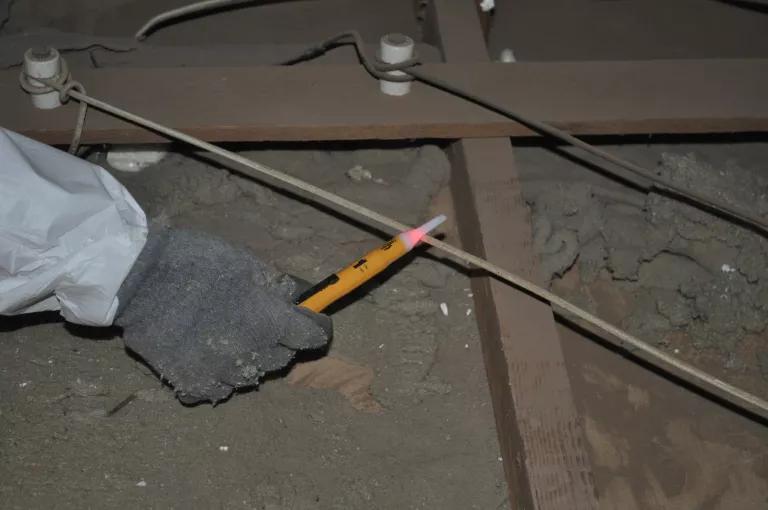
Knob and tube wiring complicate energy upgrades and can cause deferrals from accessing weatherization program support.
The agency commits, in the plan, to reconsidering the restrictive cost-effectiveness test for the program, which prevents many worthwhile projects from going ahead. While not currently factored into cost-effectiveness tests, health benefits are even bigger than energy savings. An evaluation of the implementation of weatherization funding provided in 2009 through the American Recovery and Reinvestment Act estimated per-household energy savings benefits were $3,190 - which jumped to $13,167 when considering health and safety benefits.
Not just extra credit, other programs can help communities reach goals
In addition to the Weatherization Assistance Program, another useful program for community- and city-led projects is the Energy Efficiency Conservation Block Grants (EECBG) program. Much of this investment is very flexible and will flow directly to cities. Specifically, 68 percent of the $550 million or $374 million will go directly to cities and counties based on a formula.
Compared to the historic 2008 American Recovery and Reinvestment Act, however, the total funding flowing to EECBG is much smaller this time around. Cities should expect to receive just 14 percent of what they received then. This means cities must be strategic about using these one-time funds, such as creating a fund for health and safety retrofits in low-income housing that is not currently eligible for weatherization or energy efficiency programming due to pre-existing conditions in the home.
Grants could be creatively leveraged, for example serving as a credit enhancement to a revolving loan fund, providing a loan loss reserve backstop that will make third party capital providers more comfortable that their loans will be repaid. Or by helping launch a resource hub for building performance policy compliance. Funding could thereby be layered with other utility and philanthropic funds and may be able to cover the first year or two of operating costs.
Local governments have authority for enforcing building codes. In Minnesota, community members prioritize both new advanced building codes and code enforcement, since Black and brown communities disproportionately experience harm from poor housing quality. But for many communities, once advanced building codes are adopted, implementation can be challenging due to perennially constrained resources in city government. Thankfully the infrastructure law funding includes $225 million in Building Code Update grants to support sustained and cost-effective implementation of an updated building code.
Public Schools are eligible to apply for $500 million in new grants to upgrade energy efficiency in buildings and invest in renewable energy and vehicle electrification projects. New York State’s decision to prioritize schools in disadvantaged communities for clean energy investments is an example of how DOE and state energy offices can advance energy justice.
Testing and investing in the grid
While grid reliability is an increasing concern for communities, state public utility commissions and regional planning organizations are largely responsible for grid planning and approvals. To improve resiliency and affordably meet local 100 percent clean energy goals, it’s critical to make investments in resilient electric transmission. The infrastructure law includes a combined $21 billion in future grid resilience and transmission investments, including $16 billion for Building a Better Grid, which funds collaborative planning, a suite of strong financing tools, and coordinated permitting for expanding and modernizing the grid. The program commits to “robust engagement on energy justice” which creates potential new openings for states and communities to raise resiliency goals and call for transmission planning to incorporate local commitments to 100 percent clean energy at state and regional convenings.
Pop quiz for programs to increase energy justice
In the implementation of this historic infrastructure bill, here are some key questions to pose to advance energy justice goals:
- How does this program generate new clean energy jobs, for the people and communities who need them most, to build new energy infrastructure?
- Does this energy investment reduce energy burden or the inequitable pattern of high energy costs as a ratio of income that is disproportionately born by Black and brown communities when we look at census tract level data?
- How do new programs innovate to provide better energy efficiency services and investments to address the gap of multi-family rental energy burden and lack of access to energy efficiency services?
- How can this program generate opportunities for access to reliable, affordable energy and community ownership opportunities to develop local clean energy generation as a form of wealth creation, especially for Black and brown communities?
These are questions for planning, engagement, program development and importantly, accountability toward energy justice goals.
For the past three years, Irene Nielson worked alongside mayors to support achieving their ambitious climate and equity goals as part of the American Cities Climate Challenge.

